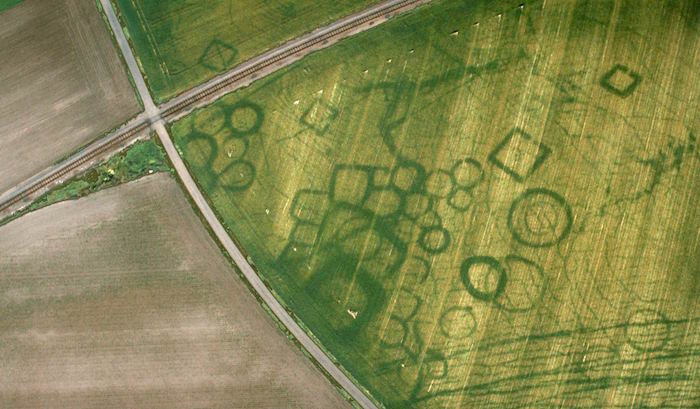First, an announcement: something enormous just happened in my life. Thursday was my last day in the U.S. Navy! After six years of service, I’m on to new challenges. Joining the Navy was the best decision I ever made, and I think leaving will be up there too.
I’m going to be doing a lot of traveling over the next six months. I may never again have this much freedom and good health, so I’m going to take advantage of every minute of it.
But don’t worry – the blog will still update as normal! I’ve got six months of content already written, uploaded, and set to update automatically, one Tuesday at a time. The social media notifications may be delayed, but the blog itself will truck along like nothing’s changed. So keep on coming by, ‘cause the latest Molten Sulfur goodness will still be waiting for you!
Now, on with your regularly scheduled blog post. 🙂

Underground features can make the plants above them grow differently. That means buried structures – ditches, buildings, walls – can sometimes be seen from the surface, if you know what you’re looking for. Archaeologists use these ‘crop marks’ to find new places to dig – and you can use ‘em to reveal dungeons in your games!

The shallow soil over a buried wall doesn’t let roots penetrate as deeply. Tall plants like wheat or corn may be grow stunted here. Conversely, plants may grow taller where there was an ancient ditch. Someone dug down through the topsoil and removed part of the clay beneath. Then, topsoil was allowed to fill the ditch, making the rich, moisture-holding soil deeper there, and promoting robust plant growth. Ancient construction, then, can create patterns in modern fields, giving you a map of what you’re going to find before you dig!

Ordinarily, these patterns can only be seen from the air, but there are exceptions. When shadows lengthen near sunrise and sunset, crop marks may cast identifiable shadows. During extreme drought, plants along crop marks may die earlier or later. And during winter, snow may melt earlier or later along crop marks.

At your table, crop marks are an obvious way to point the party towards a dungeon. A severe drought comes along, someone notices some crop marks, and boom! Adventure hook to a new underground complex.
Perhaps a farmer on a lonely outlying homestead grows intrigued by the odd marks she notices in her fields. In digging, she uncovers an entrance, goes inside, and never comes back out. When the PCs go to find out why she missed her weekly dinner with her parents, they find nothing amiss in her cabin – but they also notice the strange marks in the corn.
Crop marks really only work in farm fields. In natural settings, what’s bad for one plant is good for another, so there’s no readily-apparent effect. This lets you drop a surprise dungeon in an area thought pacified. Someone may clear some forest to establish a new field, and the first year’s crop of wheat reveals a buried temple complex.
Finally, what if this happens on a terraformed planet with no known previous inhabitants? You’re just minding your own business, then boom! Suddenly you encounter the premise of the movie Alien.
–
Thanks to Cromlyn Games on Twitter for suggesting crop marks as a subject and the terraformed planet idea. You rock, shipmate!
Sources:
The Earliest Record of Frost Marks and Crop Marks? by Anthony Crawshaw, from the twelfth news bulletin of the Aerial Archaeology Research Group (AARG) (March 1996).






